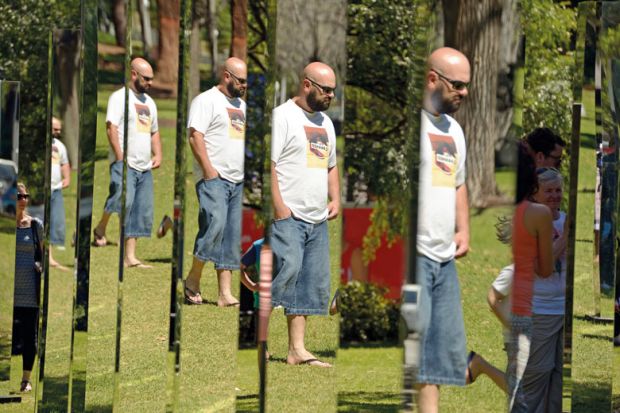High rates of self-citation are typically associated with “unusually influential authors” who have published widely, or journal requirements, rather than abusive referencing practices, a new study suggests.
Amid concerns that some scholars are using excessive self-citation to game metrics such as the h-index, several journals have set hard limits on the number of times that authors can reference their own work, with upper limits of 20 per cent and 25 per cent imposed at certain titles. Some countries, including Switzerland, have also sought to classify excessive self-citation as a form of research misconduct.
However, a preprint published on the bioRxiv platform last month suggests “unusually high levels” of self-citations in biological sciences are explained by legitimate reasons rather than efforts to distort scientific metrics.
According to the paper by Sean Cascarina, a research scientist at Colorado State University, which analysed more than 94,000 biology papers published by PLOS mega-journals as well as papers from top titles such as Nature, Cancer, Cell and Science, “very high self-referencing rates…clustered toward authors with the highest rank” who “also tend to have a larger number of total publications”.
Journals which restricted the number of citations that can be included on a paper – Nature and Science recommend 50 or fewer references – also tend to have higher rates of self-citation, with this often happening when just a handful of references are included.
Overall, median self-referencing rates stood at between 8 per cent and 13 per cent across a range of subdisciplines in biological sciences, with “high self-referencing rates” above 20 per cent described as “uncommon”.
Speaking to Times Higher Education, Dr Cascarina said journals should be wary about introducing hard limits on self-citations. “Having a high self-referencing rate doesn’t necessarily imply excessive or inappropriate self-referencing: these rates can be high for legitimate as well as illegitimate reasons,” he said.
While excessive self-citation “undoubtedly exists in a subset of the scientific literature and has negative real-world consequences”, Dr Cascarina said editors and peer reviewers should consider papers on a case-by-case basis. “I don’t view self-referencing as inherently bad: when used appropriately, it can point readers to earlier work that is relevant to the study,” he said.
“Peer reviewers may still be in the best position to evaluate self-referencing since they are typically aware of the authors’ historical contributions to the field and the relevance of the referenced publications to the work itself,” he added.
That said, journals could help authors, reviewers and editors if they “provided guidelines – but not strict rules – for self-referencing”, said Dr Cascarina, who noted this was still a rarity with scientific publishing.
“This would equip everyone with the same basis for comparison, while still providing the flexibility for situationally high self-referencing in appropriate cases. In other words, I think the main purpose of such guidelines would be to provide context when evaluating any individual publication or manuscript, but I worry that these guidelines would become (or be perceived as) rigid rules.”
Register to continue
Why register?
- Registration is free and only takes a moment
- Once registered, you can read 3 articles a month
- Sign up for our newsletter
Subscribe
Or subscribe for unlimited access to:
- Unlimited access to news, views, insights & reviews
- Digital editions
- Digital access to THE’s university and college rankings analysis
Already registered or a current subscriber? Login








